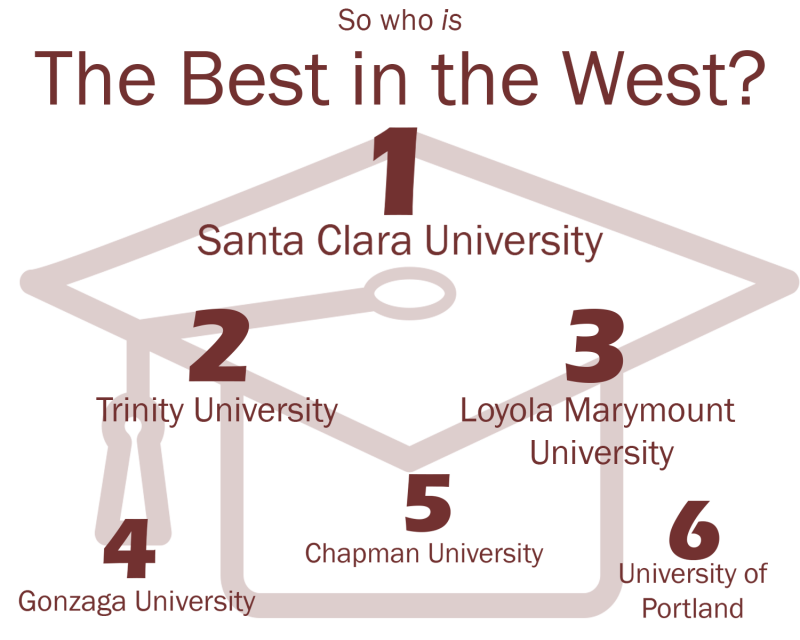Trinity lost its 26-year streak as No. 1 in the U.S. News and World Report (USNWR) “Best Regional Universities in the West” ranking this week.
After a change in USNWR’s weighted methodology, Santa Clara University was ranked No. 1 and Trinity as No. 2 with scores of 100 and 99 respectively. USNWR uses the information that Trinity provides to the Department of Education to compute their scores.
This year, USNWR gave additional consideration to one ranking category in particular, “outcomes,” over the five other categories — faculty resources, expert opinion, financial resources, student excellence and alumni giving. USNWR paid close attention to a school’s ability to promote social mobility and above average graduation and retention rates.
Danny Anderson, president of Trinity University, sent an email to campus to address the results of the report, highlighting Trinity’s long-held goal to improve graduation and retention rates.
“While we do not shift our institutional priorities to specifically meet ranking criteria, we will use this change as an opportunity to accelerate key initiatives begun in the last three years. For example, student retention and graduation rates are priorities for Trinity moving forward — and they are challenges facing higher education as a whole,” Anderson wrote.
Tess Coody-Anders, vice president for Strategic Communications and Marketing, believes that rankings are helpful to gauge the success of initiatives and goals of an institution.
“Rankings are a good lagging indicator. By that I mean you do what you do — you focus on the core objectives of the institution, and those rankings are a way to measure how that’s working for us,” Coody-Anders said.
Eric Maloof, vice president for Enrollment Management, noted that the graduation rate information used by USNWR does not necessarily reflect graduation rates of current classes.
“When you look at graduation rates, that is based on a class from six to seven years ago — which was a strong class, but Trinity continues to be a better version of itself every year, and so we’re excited about where we are now,” Maloof said.
Maloof does not see the new ranking affecting Trinity’s ability to attract incoming students.
“I don’t see this affecting student recruitment in a big way. We should be proud of all of the rankings we do really well in, but realizing that our focus should be on the things that really matter. That is, to attract and enroll students who are a diverse student body broadly defined, who appreciate the type of education we offer and who promote success within the institution and to help students reach their potential. That’s what we should be focused on, and if we continue to do those things, the rankings will all take care of themselves,” Maloof said.







